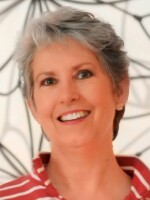I suppose every generation feels as if the past is being forgotten at an alarming rate. It makes me feel old, and a bit sad – it also makes teaching literature more complex. Because in order for students to connect with classics like Huck Finn or The Great Gatsby, the books have to be put into context for them. So a mini American history lesson is essential.
And now there’s a whole new area of information I have to share with my students: Bible stories.
Since we’ve become more secularized, young people are no longer being told the stories that are part of the foundation of western culture. This gap limits their ability to fully appreciate the beauty and complexity of literature, what’s happening in a painting, or who the guy with the slingshot is in a sculpture. Buildings were built and oratorios written in response to characters and events from The Bible. There are even references to it in The Simpsons and South Park!
I’m not suggesting we teach our children to believe things we don’t, but I’ve come to realize that young people need to know the story of Adam and Eve and the Garden of Eden, or the tale of Noah and the flood - not so they’ll be more or less religious, but to be able to recognize the nuances and richness of the arts in our world.
Last semester at Shelburne Museum I introduced the painting The Garden of Eden to a class of 17- and 18-year-olds. It struck me that without the creation story for background, students were likely to see just two naked people and a snake. In Sandra Cisneros’s book The House on Mango Street, an empty lot represents Eden for the young protagonist, Esperanza. The garden descends into squalor as she goes through puberty, and without the Adam and Eve story, the lot becomes just a setting, and the book loses much of its power.
Recently, a teacher/friend told me she had to explain to a young class who Mary was, “you know, Mary Mary,” she said to them. Later, she realized her own son didn’t know who Mary was either. So now she plans to visit some churches with him, to see statues and stained glass windows and hear some hymns.
The ability to make connections, and understand the function and timelessness of symbols, is a valuable skill. Introducing children to religious literature like The Bible helps prepare them for a deeper, richer, more cultured life.





